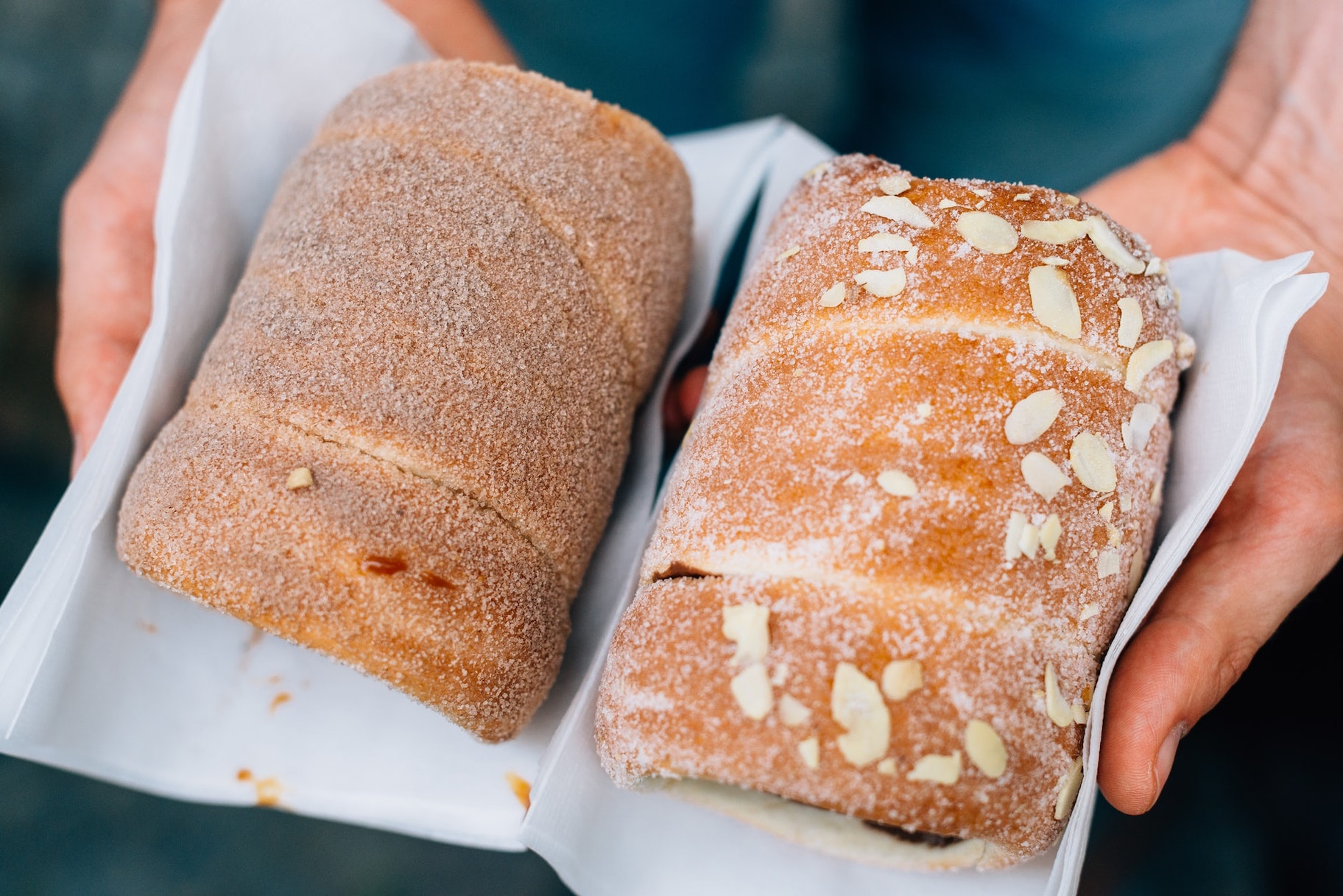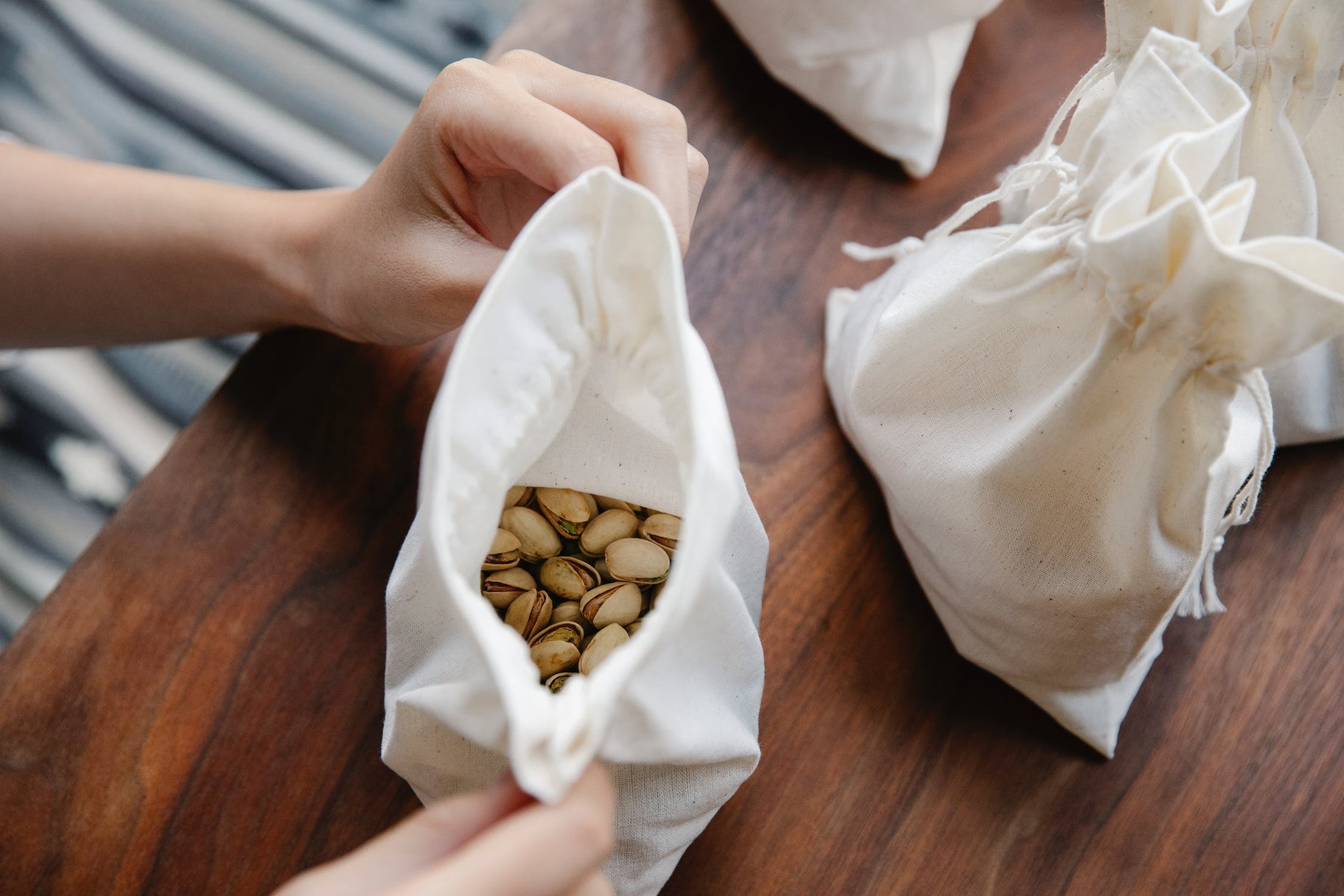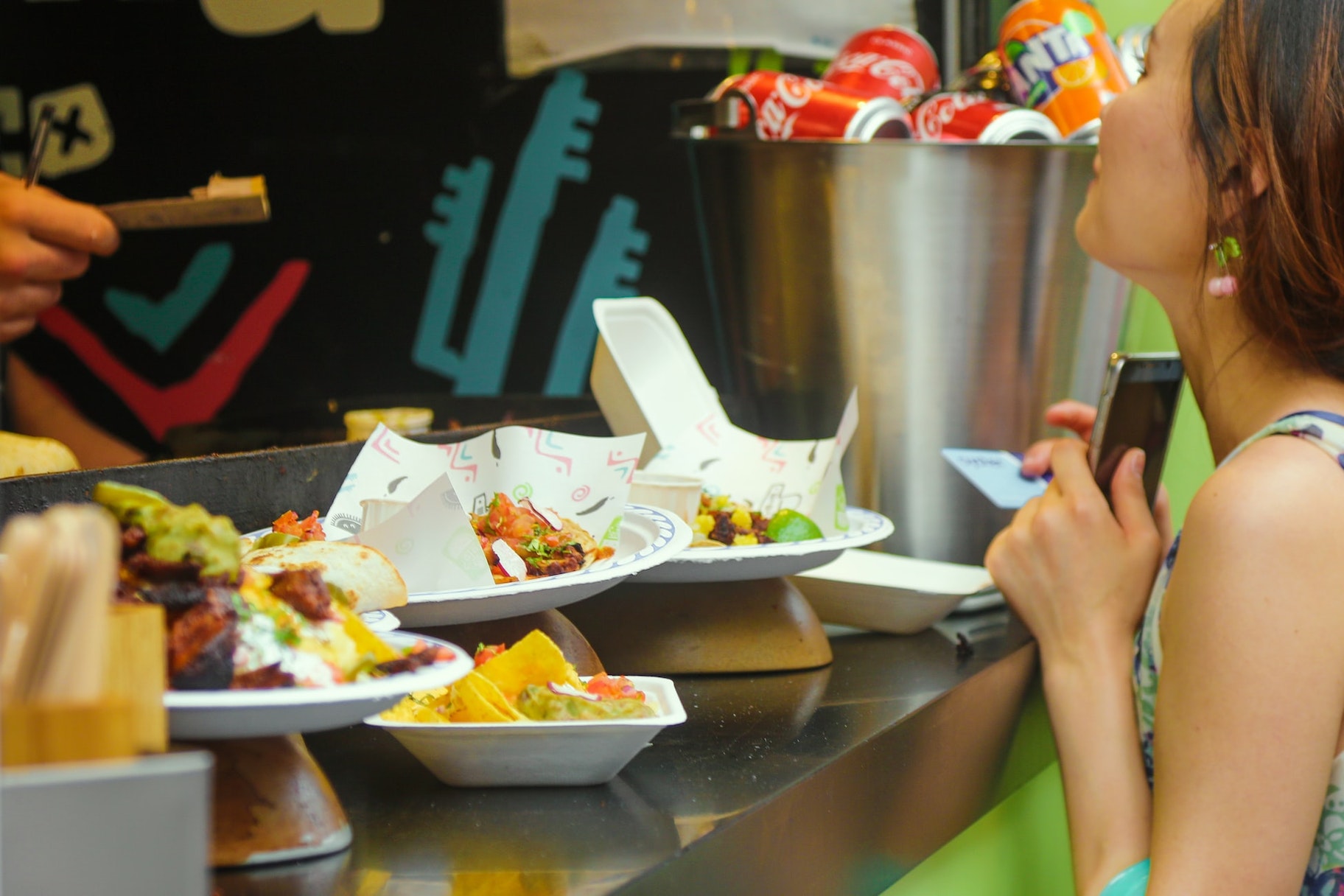Do you love to cook or bake? Hold the honor of making a loved one ditch takeout? If you answered yes to either question, chances are you’d love to learn how to sell food online.
Selling food allows you to showcase your creative side while tapping into a highly resilient industry.According to Statista, the food and grocery market value is expected to reach a value of around 4.2 trillion US dollars by 2027.
Everybody loves great-tasting food, and we all have to eat every day. So regardless of shifting trends in ecommerce, when it comes to selling food online, you should always have an audience.
But there are some challenges to consider. For example, selling food online means taking extra precautions with your packaging. Forget to list an ingredient or allergy risk, and you could find yourself in trouble with the healthcare authorities.
Fortunately, a little guidance is all you need to start and run a successful online food business. Below is everything you need to know to get started, including how to overcome the challenges associated with selling food online.




How to Start an Online Food Business in 7 Steps
1. Know the Law
Before you can get serious about starting an online food business, you need to know the rules. If you get anything wrong (from your packaging to your ingredients), you put your customers at risk.
You could even risk huge fines if you’re not following the right regulations.
Any person in the US planning on selling food from their home needs to follow the “Cottage Food Laws”。这基本上意味着你需要知道如何圣ore your food correctly and keep it away from dangerous contaminants, like pets.
You’ll also need:
- A state business license
- Zoning clearance and permits from your government
- Kitchen inspections conducted once per year
- Have regular food handling training sessions to keep food safe
- License your business in your chosen state. You can do thison the SBA website.
Research the guidelines and regulations in place for food management and selling in your region.
It’s also worth taking courses on food safety, so you can put your customers’ minds at ease if they have any questions about your food.
2. Choose Your Niche
Food is an extremely broad industry. Although you might be tempted to sell “food for anyone,” the more specific you get with your niche, the more likely you are to stand out. Start by thinking about which food types you’re passionate about. Do you love making bread, or can you whip up a delicious pasta in minutes?
If you don’t have a specific preference, some initial market research could inspire you. Use akeyword researchtool to see what people are currently searching for in the food industry. Alternatively, you can look into trending food ideas, like plant-based meals, vegan products, and artisanal food products. A few niche options include:
- Custom cake and novelty foods
- Organic, natural, fair-trade foods
- Food made for dietary restrictions (Gluten-free or dairy-free)
- Gourmet, small-batch, and artisanal foods
如果你刚刚开始销售食品名单ts online, it might be best to focus on items that don’t require a big investment. For instance, you can make candies, dried herbs, canned products, and baked goods without buying specialist equipment. Keep it simple and fun in the beginning.

3. Find Your Supplier
Whether you’re making food products from scratch or curating items to sell to your audience, you’ll need a reliable supplier.Choosing the correct supplieris essential in the food landscape. The wrong selection puts your brand at risk, but it could also lead to food poisoning and illness in your customers. Make sure you do your due diligence while preparingto sell food from home.
When shopping for ingredients and suppliers, take the time to examine the reviews left by other customers. Look for transparency in your suppliers in the form of well-defined supply chains and plenty of information about where products come from.
If you’re looking for a supplier with specific credentials (like sustainably sourced ingredients), and you can’t find evidence of those facts online, reach out and ask for more information. Any good supplier should be able to provide the information required to put your mind at ease..
Ensure your suppliers can also give you products with a decent shelf-life, so you’re not sending out foods nearing an expiration date. You can also boost your chances of keeping food fresh by managing your inventory correctly.First-in-first-out strategiesare often best for food.
4. Work on Packaging, Branding, and Labeling
A good brand imageis important in any business, but it’s particularly important to get your packaging right when building an online food business. Your branding should be approachable and relevant to the kind of product you’re selling. An all-organic food company might use a lot of natural colors and plant imagery. A business selling custom cupcakes might have a brightly colored, novelty appearance.
Once you’ve got your brand personality nailed down, think about how you’re going to package your food correctly, not just for shelf appeal, but compliance too.The FDA food ingredient and packaging guide凸显出你需要的信息supply to help customers make the right purchasing decisions. Transparency is crucial with your ingredients.
Sourcing the right providers for your ingredients will make it easier to ensure you’re aware of every product that goes into your finished goods. There are guidelines available on the web for each country when it comes to labeling rules.
Go through theFTC fair packaging actandthe US food packaging manufacturerdirectory before creating your packaging. Make sure that the packaging you choose is also suited to the kind of food you’re selling.

5. Price Your Food Products
Pricing can be a tricky process if you’re new to selling food online. On the one hand, you don’t want to charge too little, or your profit margins will suffer. Low prices can also indicate low quality in some parts of the food industry. Alternatively, pricing too high means you risk alienating your audience. Getting the balance right is essential for success.
Start by researching your industry and the prices set by your competitors. This should give you a good starting point to determine theideal price strategiesfor your online business. If you believe in the value of your product, or you have something unique to order (like exclusive ingredients), you can price your items at a high margin. Just make sure you know how to show your food’s value to your customer.
Note:Profit margins for food businesses can differ depending on the products they’re selling. For example, breakfast foods have some of the highest margins of any edible offering. In contrast, premium foods like Wagyu beef can be expensive to source, giving you less room to charge a premium.
6. Create Your Online Store
Now you’re almost ready to start selling food online.
First, however, you’re going to need a website. While you may attract customers from all over the web through blogs, podcasts, and social media, your website will be at the heart of your online food business.
Start with a well-known store builder likeShopifyand design something that appeals to your audience.

You’ll also need to ensure you’re making your food look as irresistible as possible. In fact, when it comes to selling food online, it would be wise to do your best to make your potential customers salivate! That’s why high-quality product pictures are crucial. Plus, make sure towrite epic product descriptionsto encourage people to buy. The images and the written content need to compel your website visitors to take action.
You’ll also need:
- An About page:To help customers get to know you
- A Contact page:For any customer questions
- An FAQ page:With information about your suppliers
- Any accreditation or certificates:To prove the safety of your products
- A blog page:For content marketing
- A lead generation strategy:Such as pop-ups or landing pages to encourage people to join your email list.
Today’sleading store builderscome with everything you need to start selling food products online.
Pro tip:Make sure you know your brand guidelines before youcreate a website. It’s important to use the same tone of voice, imagery, and colors in all your digital channels — consistent branding ensures your business is easily recognizable across all customer touchpoints.
7. Promote Your Food Business
Once you’ve got your store setup, you can get to work on promoting your food brand. This is the time to go all-out and make your products as irresistible as possible. There are plenty of great ways to generate attention online. Social media is a great choice for food companies because most people love seeing food snaps on Instagram and Facebook.
You can post everything fromInstagram StoriestoTikTok videosof your mouth-watering goodies. Alternatively, why not experiment with some guest blogging? Form a partnership with a well-known food influencer and post about your recipes on their site. Orwork directly with an influencerby asking them to help promote your products.
Other great marketing strategies for selling food online include:
- Posting recipes on Pinterest:Visual forums are often a great place to find food customers. Sharing recipes on what people can do with your foods or ingredients can get people excited about your product.
- Offering great deals:Reward your early customers with discount codes, vouchers, and as many deals as possible. Free tasters of new products can also generate more interest in your food, particularly when sent to influencers.
- Selling through other companies:You can partner with bigger brands and supermarkets to bring your food into new environments. Just make sure you shop around to ensure you’re getting a good deal when it comes to profit margins.
- Offering cooking education:Get customers excited about your food by providing them learning experiences that help them develop new recipes.

How Much Does It Cost to Start a Small Food Business?
If you’re keen to start selling foods online, you’re probably wondering how much initial investment you need. As mentioned previously, the costs of starting an online food business will depend on a lot of different factors.
If you plan to open a physical food store (brick and mortar) or launch a new café or restaurant, the initial costs would be higher. A physical space can cost youupwards of $200,000to run. If you have limited capital for business? Try starting as a small batch producer. Creating food products and selling them from home means you’ll have much lower overheads. You should also find it easier to expand into commercial spaces and unlock new opportunities as your business evolves.
If you dostart your small business from home, make sure you check up on how to get inspections done for your kitchen. It’s also worth working with an accountant to help you determine what you can claim back as a home worker on your tax returns. Don’t want to run your entire company from home? You could consider hiring space for when you’re making your batches.
Conclusion
Running your own online food business is an exciting and often profitable way to bring your entrepreneurial dreams to life. If you’ve got the right ingredients, like a great website, a fantastic product, and a good pricing structure, you’re already on track to a reliable business.
Just remember, you’ll need to be extra cautious when choosing suppliers, following health and safety rules, and creating food packaging. The food industry is a highly regulated one, and a small mistake could wreak havoc on your business. Be cautious, and always do your research before you jump in.
Summary: How to Start an Online Food Business in 2021
- Understand the legalities of selling food online
- Choose a profitable niche
- Find suppliers for sourcing ingredients
- Work on packaging, branding, and labeling
- Price your food products
- Build your ecommerce store
- Market your food business






